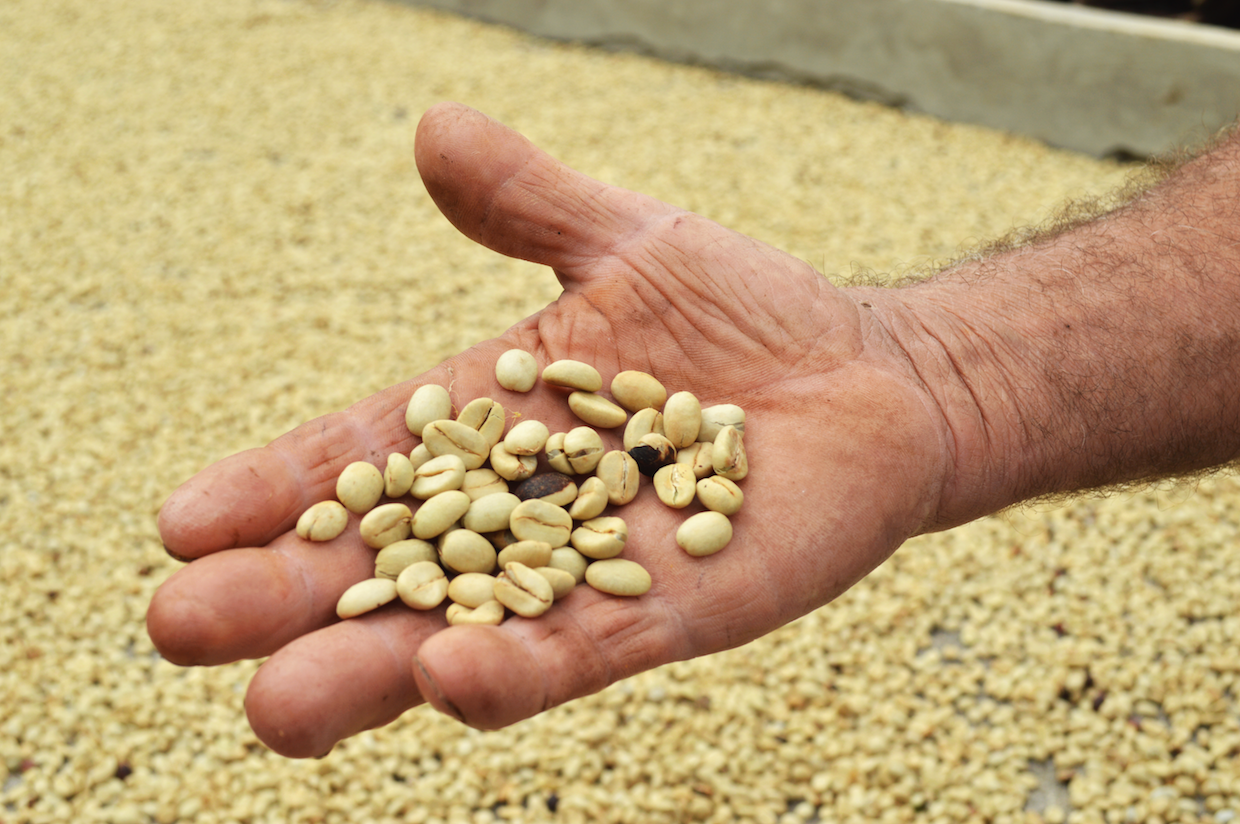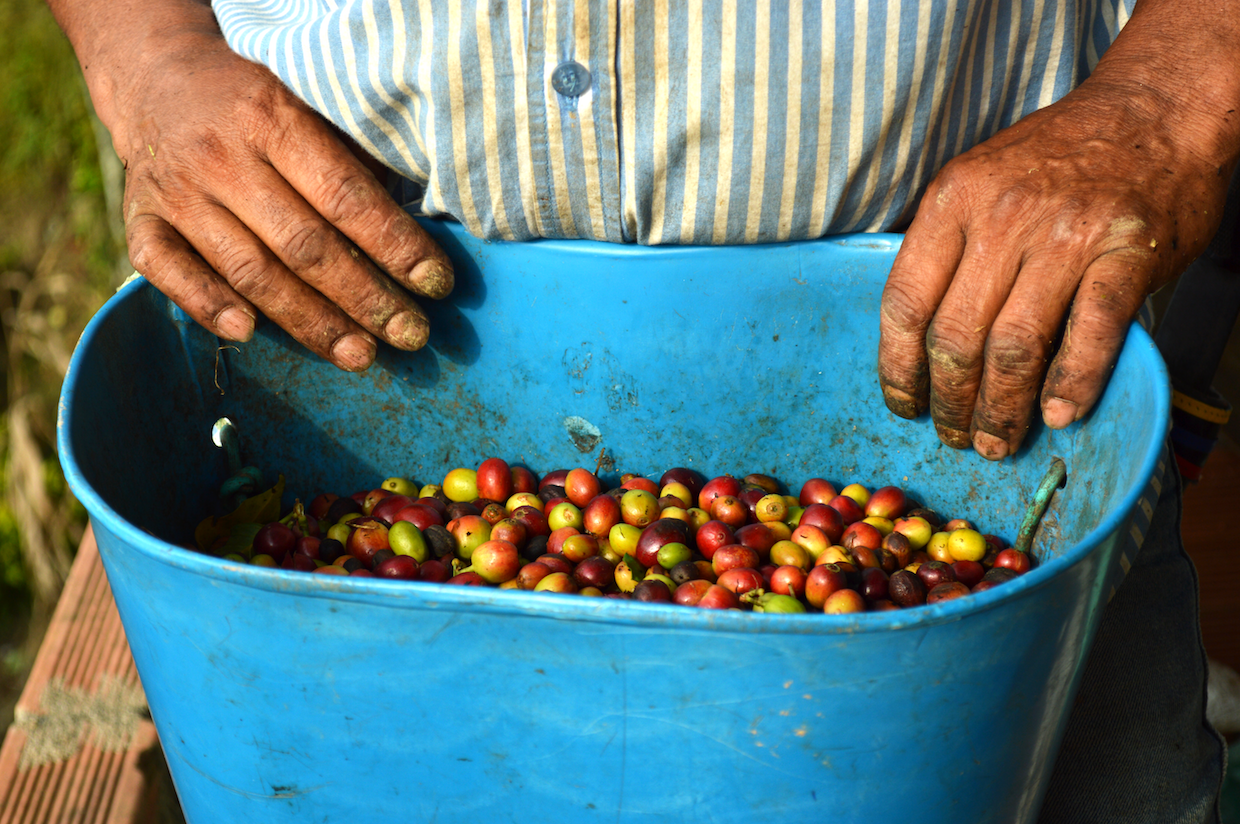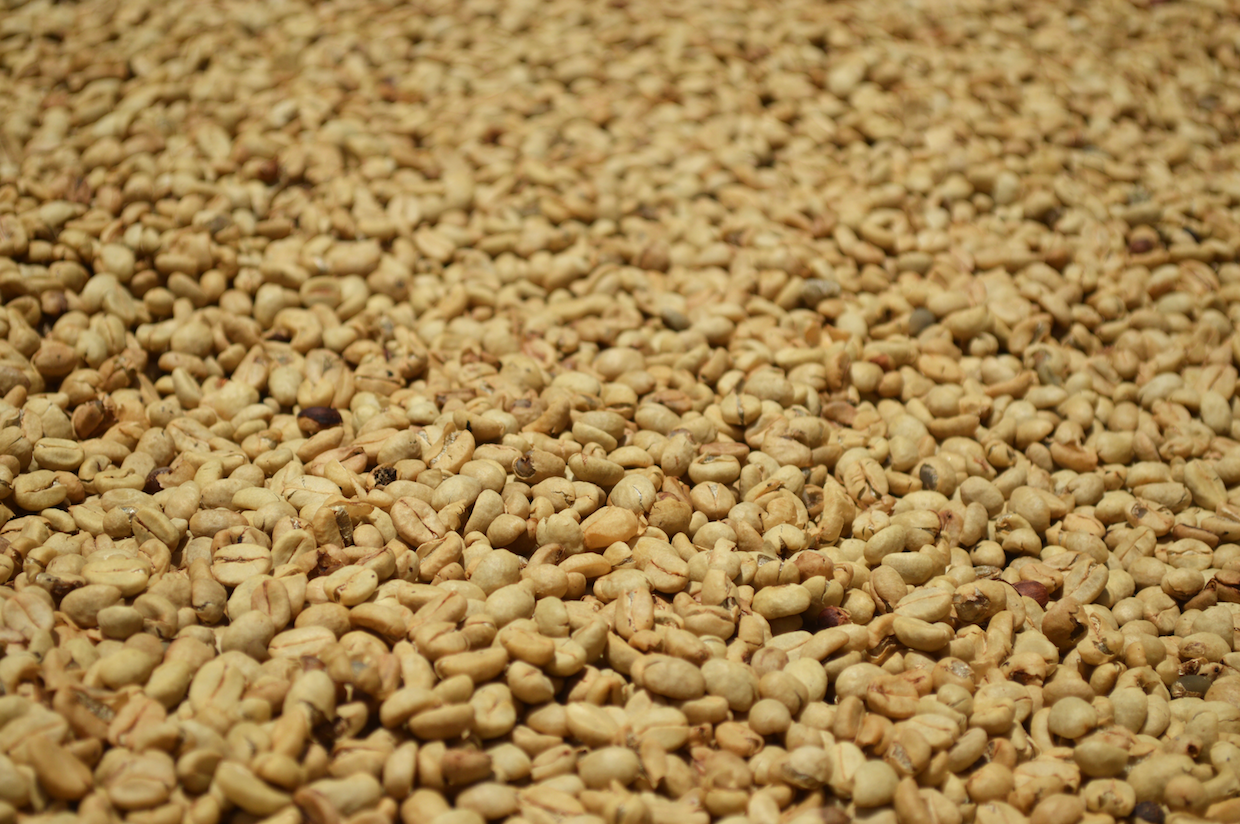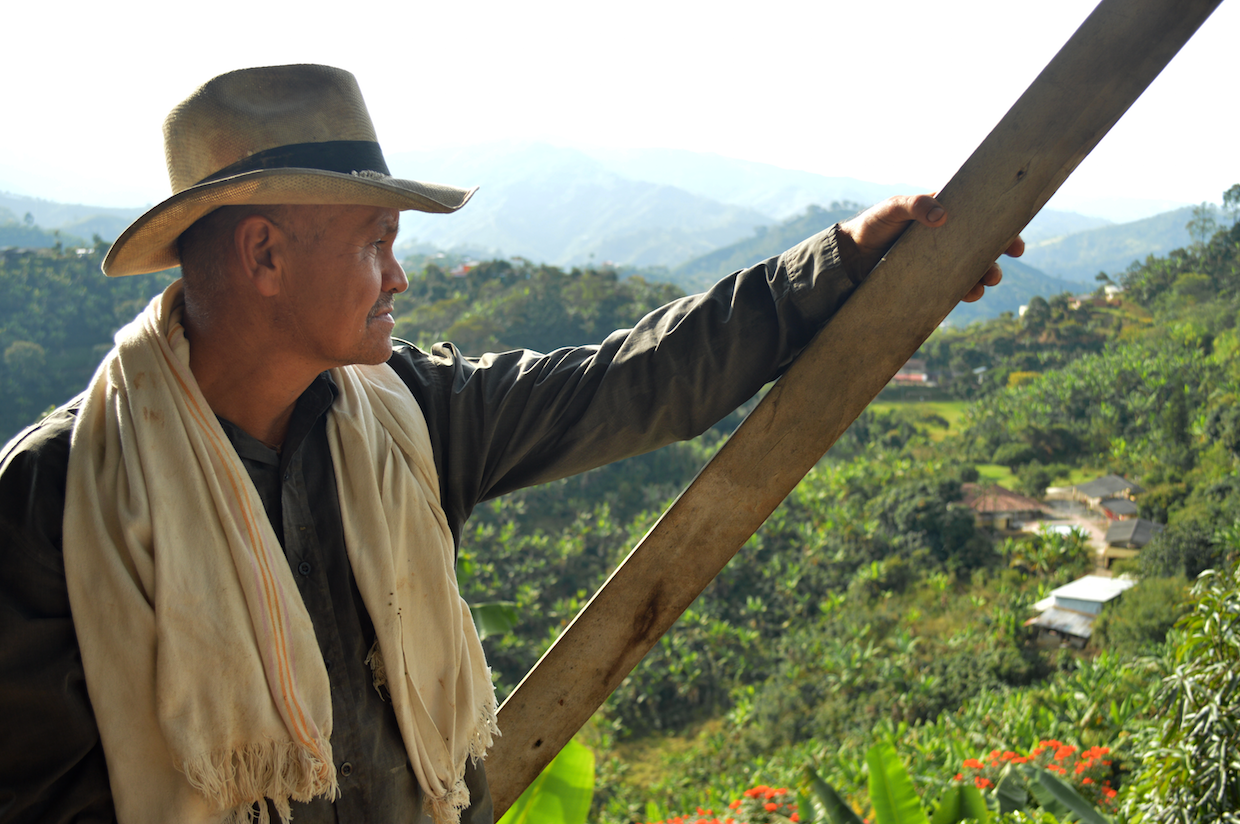An increasingly consolidated, profit-driven coffee industry in leading consumer markets like the United States and Europe is failing to respond to serious sustainability threats. In this failure — in which the short-term pursuit of profit is prioritized over long-term sustainable practices — the coffee industry is rapidly headed towards its own peril.
Such is the cloudy picture painted in the recently released 2018 Coffee Barometer, a report created in collaboration by leading sustainability NGOs Conservation International, COSA, Hivos, Oxfam-Worldshops, Solidaridad, and the SAFE Platform. The 2018 report follows a similar report in 2014, yet authors note that little has been accomplished sector-wide since then, largely because the industry’s feet have been “stuck in clay.”
In summarizing a number of environmental, social and economic sustainability issues currently facing the coffee sector, while documenting existing engagement and collaboration in sustainability initiatives — or lack thereof — in the private sector, the 36-page report provides a bleak forecast.
In terms of timeliness, the report resonates most deeply in its exploration of consolidation in the coffee industry, where through acquisitions made by companies such as JAB and Nestlé, some 10 roasting companies now move some 34-35 percent of the world’s roasted coffee.
The complete report is available here, but we have broken down some of the most interesting analyses by category below:
On knowledge gaps in global production
“In this new edition of the Coffee Barometer, we pinpoint some gaping holes in our collective knowledge that urgently need to be tackled. For example, coffee production has been growing by over 20% (+26 million bags) since 2010, but we do not know how much forested land has been converted into farm land used for coffee production. Furthermore, it is assumed that 20-25 million smallholder farmers produce 70% of the
coffee globally, an estimate that stands unchallenged in the last 15 years. The coffee harvest therefore depends on millions of farmworkers; an important but invisible group of stakeholders. They remain largely voiceless in the discussions about a sustainable coffee sector.”
On consolidation in the roasting market
“As growth stagnates among larger players, they acquire smaller companies and diversify their portfolio to generate growth. Rapid consolidation is transforming the global coffee industry from its roast and ground leaders, like Nestlé and Jacobs Douwe Egberts, to retailers, such as Starbucks and McDonald’s. Beyond the traditional first wave roast and ground market, there is fierce competition at brand level in various market sub sectors, especially in the second and third-wave coffee.”
On the role of commodity-focused trading houses
“The trade houses mainly deal in bulk grades and thin margins. They derive their incomes by dealing in very large volumes, usually supplying the largest multinational coffee roasting companies.8 The smaller-sized international coffee trading companies often operate in specialty and niche markets, such as fair-trade or direct trade. Trading houses not only own a large part of the processing and storage facilities in most coffee producing countries, they also engage in farm management, export and import of bulk, specialty and instant coffee, logistics, storage, risk management and finance. The commodity trading houses are either vertically integrated in the coffee supply chain or they can use hedging instruments to manage the risk of price volatility.”
On consolidation and sustainability
“Completion of mergers and acquisitions and integration of new businesses are usually multi-year processes. This can lead to loss of focus on the development and implementation of sustainability commitments. The competitiveness at the roaster and retail level does not seem to value sustainability as a differentiator. The companies instead are trying to build families of specialty-brands that appeal to high-end consumers. In the race to position the brands individually, there does not seem to be a concerted effort among roasters to align or strengthen sustainability commitments at brand level, let alone at holding level.”
More on consolidation
“Consolidation might yield an opportunity for a joint effort from different brands, if the brand owners truly make sustainability part of their ethos. If they use their scale to collaborate and develop ambitious and overarching sustainability strategies, this would create a strong force for positive change. Up to now however, quite the contrary seems to be happening. Apparently the manifold of recent mergers have a paralysing effect on the individual companies’ sustainability agendas, and hence on the coffee sector at large.”
On value distribution and consumer perception
“Obviously, constrained supply of high quality Arabica coffee, combined with increasing demand, should lead to increasing prices. But this has not been the case. Lower-grade Arabica can be substituted with Robusta in coffee blends. This reduces the roaster’s cost levels, and goes unnoticed, since most coffee consumers lack the sensory skills to recognize high quality coffee. They are therefore more likely to rely on external cues, such as price, packaging and advertising, that may or may not reflect the intrinsic quality of the product.”
On true costs and transparency
“World coffee prices have fallen by two-thirds in real terms since the early 1980s, and the real earnings of coffee farmers have halved in that time. Farmers earning too little to secure decent living conditions, won’t invest in their farms. Earnings can vary widely, due to inefficiencies in the supply chain. Farmers in Latin America can receive up to 87% of the export price, whereas this in East Africa this could be as low as 61% due to variations in farmer organizations, policy environment and competitive markets. The answer to the question if making a decent living income is actually feasible in the current coffee market, strongly depends on the local context. For a sound picture of value distribution along the coffee chain, insight is needed in earnings as well as costs of production at the various links of the supply chain. Record keeping at farm level is required, as well as a need for the companies in the chain to be transparent about their costs.”
On climate change and deforestation
“Efforts to meet the growing demand for coffee, could by 2050 potentially cause doubling — and perhaps even tripling — the current 10.5 million hectares of land used for coffee production.10/11 However, 60% of the land suitable for coffee production in 2050 is currently forested. In addition, only 20% of this is under any formal protection. Meeting future demand for coffee could come at the expense of forests. Data on coffee land use change suggests that apart from Brazil, where increases in production are driven by technology, in nearly all countries where coffee production is expanding rapidly — e.g. Vietnam, Indonesia, Ethiopia and Peru — new coffee crop lands are mostly created by deforestation.”
On long-term forest conservation
“Forest conservation in combination with coffee agroforestry can reconcile economic and environmental goals. Since coffee is a perennial plant that lasts for 20 to 30 years, this is about long-term planning and investing. However, as smallholder coffee farmers are struggling to survive due to small farm plots and low productivity, a short-term approach often prevails.”
On the lack of sustainability investments
“Coffee corporations have the leverage in resources, global presence, and business incentives to significantly contribute to mitigating the coffee sectors’ main global risks. In this industry, whose annual value is currently $200 billion, the total investment in sustainability efforts is an estimated annual budget of $350 million.
“Taking a closer look at this figure explains that at least 50% of this funding is generated through premiums for certified coffee. Around 20% is direct investment of the private sector, which matches an equivalent of 20% foreign donor funding. Another 10% is available from undefined sources of funding.30 It goes without saying there is critical underinvestment, since almost zero percent of profits are re-invested in increasing sustainability of the production side of the coffee value chain.”
On Voluntary Certification Standards (VSS) such as certifications
“On the one hand, there is evidence of higher returns, better access to credit and stronger farmer organisations, and increased adoption of environmentally friendly coffee farming practices. On the other hand, VSS tend to exclude the poorest and most marginalised producers. These are unable to meet the strict production requirements and their situation grows even worse due to increased costs passed down to them by buyers. It remains difficult to compare and independently benchmark the different VSS and their impact, since next to the standards, this must assess the mechanisms and principles for implementation, monitoring and process of continuous improvement.”
On VSS and market demand
“The fragmentation and dynamics of the sustainability market contributes to high levels of confusion among ethical consumers, who are confronted with various seals and labels and different sustainability claims.”
On sustainable sourcing options
“While the VSS are useful for differentiating a product in the end market, they do little to alter the power dynamics that maintains an unsustainable situation where farmers bear most of the cost while getting the least of the benefit. Certified and verified coffee procurement can be governed in a hands-off way by roasters, who just need to specify which kind of coffee and certification they procure from traders.”
On Multi-Stakeholder Initiatives (like Global Coffee Platform, the Sustainable Coffee Challenge, Coffee & Climate, SAFE, of the work of the Specialty Coffee Association or World Coffee Research)
“A potential benefit of these MSI’s is that they can help stakeholders to better understanding the challenges of others in the sector and identify opportunities to acknowledge successes and share best practices via collaboration. Ideally, the MSI’s reduce the sector’s fragmentation of sustainability efforts and enhance transparency and accountability. One of the biggest drawbacks of these initiatives is that their multitude slows down the pace of decision-making, while the urgency to act is high.”
On coffee’s grave market imbalance
“While coffee is increasingly lucrative with a retail value of $200 billion in 2015, less than 10% of the aggregate wealth stays in the producing countries. Whereas coffee companies are busy conquering markets, cutting costs and driving efficiency, coffee farmers on their end are struggling to get their fair share of the total value added in the coffee industry. The economic inequality is rising, as prices paid to farmers have been falling for decades often reaching levels well below the poverty line. The sector needs fair prices for farmers, for their livelihoods and for investments to ensure the long-term viability of their farms. Coffee’s image as a poverty crop will not help to attract rural youth as they aspire a better future and seek employment outside the coffee sector.”
Nick Brown
Nick Brown is the editor of Daily Coffee News by Roast Magazine.
Comment
2 Comments
Comments are closed.










This is mindblowingly sad. Many (well, some) of us have been taking these issues seriously for decades and continue to make small but meaningful impacts at the farm level. The big boys and many of the newer companies have always relegated sustainability to the marketing departments at best, or made bogus claims at worst. Of course, the real victims of this are the farmers, as usual, who are not much more than cheap (or free) marketing fodder for those who, frankly my dear, don’t give a damn.
This is looking bleak. I hope we can pull together and make this sustainable.
I cant imagine living without the amazing coffee’s we have available right now.